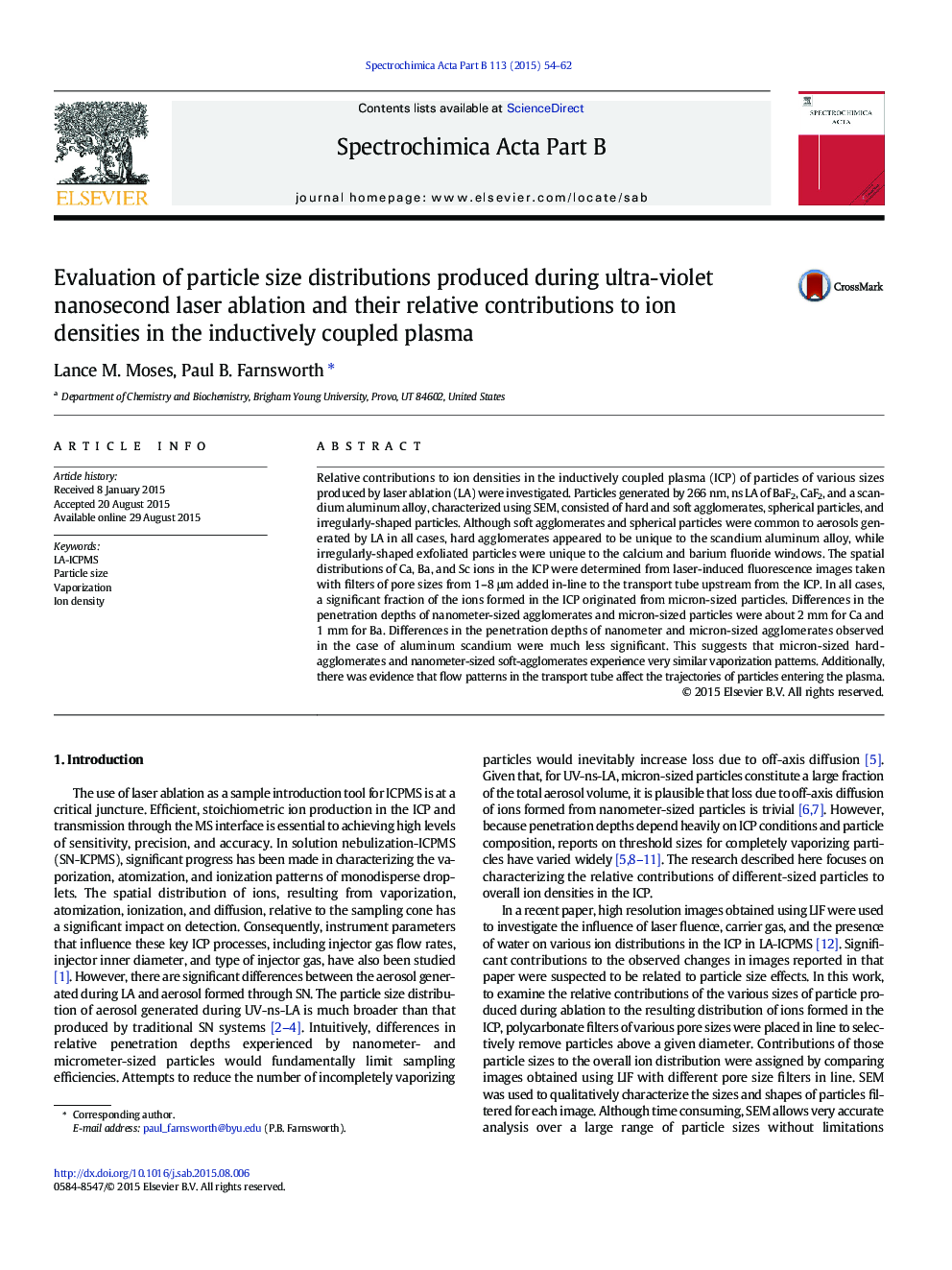| Article ID | Journal | Published Year | Pages | File Type |
|---|---|---|---|---|
| 1239473 | Spectrochimica Acta Part B: Atomic Spectroscopy | 2015 | 9 Pages |
Abstract
Relative contributions to ion densities in the inductively coupled plasma (ICP) of particles of various sizes produced by laser ablation (LA) were investigated. Particles generated by 266 nm, ns LA of BaF2, CaF2, and a scandium aluminum alloy, characterized using SEM, consisted of hard and soft agglomerates, spherical particles, and irregularly-shaped particles. Although soft agglomerates and spherical particles were common to aerosols generated by LA in all cases, hard agglomerates appeared to be unique to the scandium aluminum alloy, while irregularly-shaped exfoliated particles were unique to the calcium and barium fluoride windows. The spatial distributions of Ca, Ba, and Sc ions in the ICP were determined from laser-induced fluorescence images taken with filters of pore sizes from 1-8 μm added in-line to the transport tube upstream from the ICP. In all cases, a significant fraction of the ions formed in the ICP originated from micron-sized particles. Differences in the penetration depths of nanometer-sized agglomerates and micron-sized particles were about 2 mm for Ca and 1 mm for Ba. Differences in the penetration depths of nanometer and micron-sized agglomerates observed in the case of aluminum scandium were much less significant. This suggests that micron-sized hard-agglomerates and nanometer-sized soft-agglomerates experience very similar vaporization patterns. Additionally, there was evidence that flow patterns in the transport tube affect the trajectories of particles entering the plasma.
Related Topics
Physical Sciences and Engineering
Chemistry
Analytical Chemistry
Authors
Lance M. Moses, Paul B. Farnsworth,
